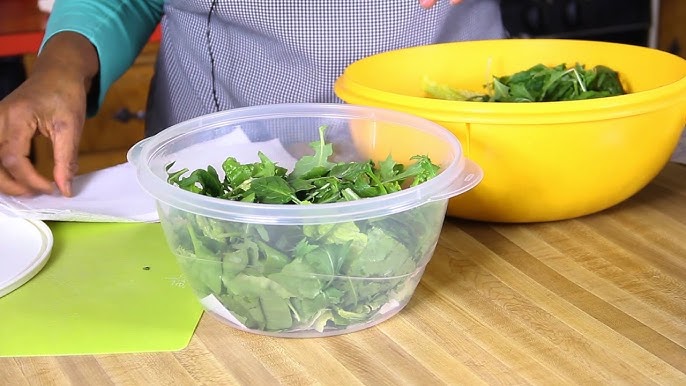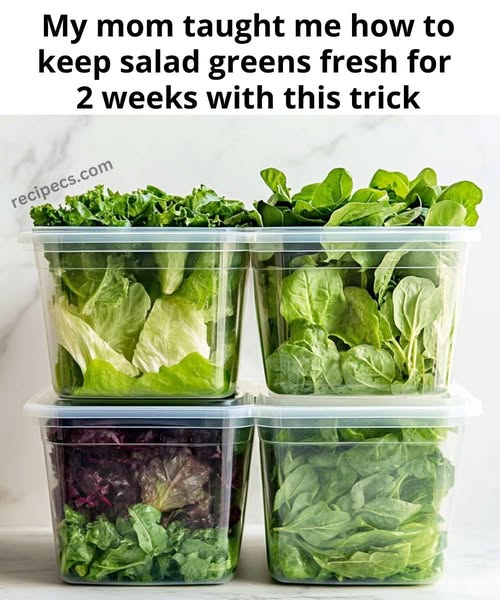Salad greens are a staple in many healthy diets, but they can spoil quickly if not stored properly. Wilted lettuce, soggy spinach, and slimy arugula are common problems in the fridge often going to waste before they’re used. Fortunately, with the right storage techniques, you can significantly extend the shelf life of your greens and keep them fresh for up to a week or more.
Why Salad Greens Spoil So Quickly
Leafy greens are delicate by nature. Their high water content and thin structure make them particularly susceptible to moisture, mold, and decay. When exposed to too much moisture or air, they begin to break down quickly—leading to browning, wilting, and unpleasant textures. This is why proper handling and storage methods are essential if you want to make the most of your greens and avoid unnecessary food waste.

Step 1: Wash and Dry Thoroughly
Although some prefer to wash their greens just before use, washing them before storing can actually help extend freshness—if done correctly. Begin by rinsing your greens in cool water to remove dirt and potential bacteria. Then, dry them completely using a salad spinner or clean kitchen towels. Moisture is the number one enemy of fresh greens, so eliminating as much water as possible is critical before storing.
Step 2: Use Paper Towels or Clean Cloth
After drying, layer your greens between paper towels or a clean cloth. This step helps absorb any residual moisture and prevents condensation from building up in the container. Line the storage container with a dry paper towel at the bottom and place another on top of the greens. This simple trick can extend freshness by several days, keeping your greens crisp and vibrant.
Step 3: Choose the Right Container
The container you choose makes a difference. Opt for a large, airtight plastic or glass container that gives your greens room to breathe. Avoid cramming them into tight spaces, which can cause bruising and speed up spoilage. Ventilated produce containers designed specifically for leafy greens are also a great investment. They maintain optimal humidity and airflow inside the container, preventing your greens from becoming soggy.
Step 4: Store in the Right Fridge Zone
Temperature and airflow inside your refrigerator matter. Store your salad greens in the crisper drawer, which is specifically designed to maintain the right humidity level for fruits and vegetables. Keep them away from items that emit ethylene gas—like apples, bananas, or tomatoes—as this can speed up spoilage.
Bonus Tips for Extra Freshness
- Add a dry paper towel every couple of days to absorb new moisture.
- Use a perforated produce bag if you don’t have a container.
- Do not chop greens in advance—cut edges wilt faster than whole leaves.
- Freeze any leftover greens before they spoil for smoothies or soups.

Conclusion: Keep Your Greens Fresher, Longer
By taking just a few extra steps, you can keep your salad greens fresher for days—sometimes even weeks. Washing, drying, proper layering, and thoughtful storage make all the difference in preserving texture, color, and taste. Not only will these techniques help you enjoy crisp, fresh salads every day, but they’ll also help you save money and reduce food waste in the long run.

















